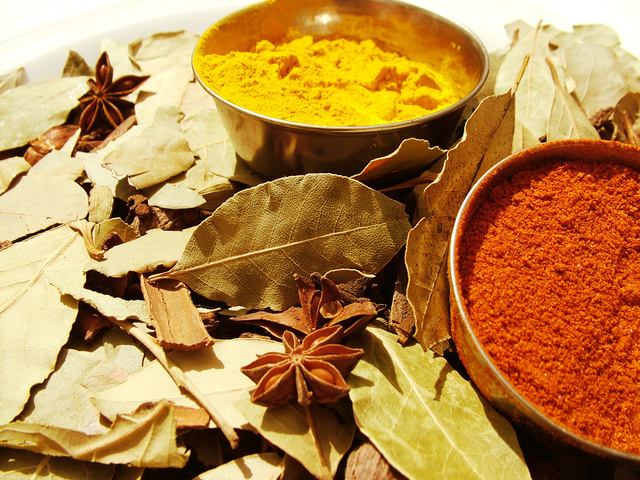 Tumeric, the yellow hued spice known from Indian cooking has been taking the health world by storm in recent years with its anti-inflammatory effects. Tumeric has been used for thousands of years in Ayurveda, the traditional medical system of India. Tumeric has equally been used by Traditional Chinese medical practitioners. In the recent decade, this healing spice has been gaining in popularity in the West.
Tumeric, the yellow hued spice known from Indian cooking has been taking the health world by storm in recent years with its anti-inflammatory effects. Tumeric has been used for thousands of years in Ayurveda, the traditional medical system of India. Tumeric has equally been used by Traditional Chinese medical practitioners. In the recent decade, this healing spice has been gaining in popularity in the West.Tumeric also protects against cancer, radiation and heavy metal toxicity.
Inflammation is rampant among the general population today. Diseases like diabetes, arthritis, joint pain, Alzheimer’s, depression, obesity and autoimmune conditions all have links to inflammation.
While inflammation needs to be addressed with an anti-inflammatory diet and lifestyle changes, like exercise and stress reduction, helpful anti-inflammatory supplements like turmeric can be very supportive. Curcumin is the active anti-inflammatory ingredient in turmeric.
While food is often the best and tastiest medicine, eating more of it doesn’t always bring results. That’s because some foods are not as bioavailable as others, meaning that the body has trouble properly breaking the food down for optimal absorption. Curcumin is an example of a food with pretty low bioavailability.
That means that a majority of orally ingested curcumin gets metabolized before it reaches the bloodstream. And increasing the dosage won’t increase absorption.
To unlock curcumin’s anti-inflammatory potential turmeric must be consumed in one of three ways. So before you douse your food in turmeric powder, take turmeric supplements or add the yellow powder to your smoothies, read the tips below to get the highest benefit from this medicinal spice.
Add black pepper to your tumeric.
Black pepper has it’s own health benefits such as aiding in digestion, reducing memory impairment and fighting infections. And it’s no coincidence that many recipes for turmeric-rich Indian curries contain black pepper as an ingredient. Piperine, the compound that gives black pepper its spiciness also greatly increases curcumin’s bioavailability.
Black pepper has it’s own health benefits such as aiding in digestion, reducing memory impairment and fighting infections. And it’s no coincidence that many recipes for turmeric-rich Indian curries contain black pepper as an ingredient. Piperine, the compound that gives black pepper its spiciness also greatly increases curcumin’s bioavailability.
And you don’t need much. Just a pinch or quarter teaspoon will do. Black pepper inhibits the liver’s ability to excrete curcumin, making it stay in the blood stream longer. And it increases the bioavailability of curcumin by a whopping 2000 percent.
Add fat to your turmeric.
Since turmeric is fat soluble, it needs to be combined with a fat for the body to fully absorb it. When eaten with fat, curcumin can be directly absorbed into the bloodstream through the lymphatic system thereby in part bypassing the liver.
In Indian cooking turmeric is traditionally combined with fats like clarified butter or coconut milk. Again, this is no coincidence.
Of course you can use any healthy fat you like.
Heat increases the bioavailability of curcumin.
Heating turmeric in a sauté pan can greatly increase the absorption of curcumin. The problem with taking turmeric pills is that they are very insoluble in water. So the best way to use curcumin for health purposes is to cook it in oil with a dash of black pepper.
Now that you know how to get the most out of your turmeric, the recommended daily dosage is 1 to 3 grams of dried powder a day.
While very helpful, turmeric alone is not enough to fight inflammation. Eating an anti-inflammatory diet and exercising is the best way to lower inflammation in the body.
If you need help getting started, the 21-Day Body Makeover program is a simple introduction to a manageable anti-inflammatory lifestyle. After 3 weeks you can get a head start on lowering your inflammation, reducing weight and ridding yourself of inflammatory symptoms.

